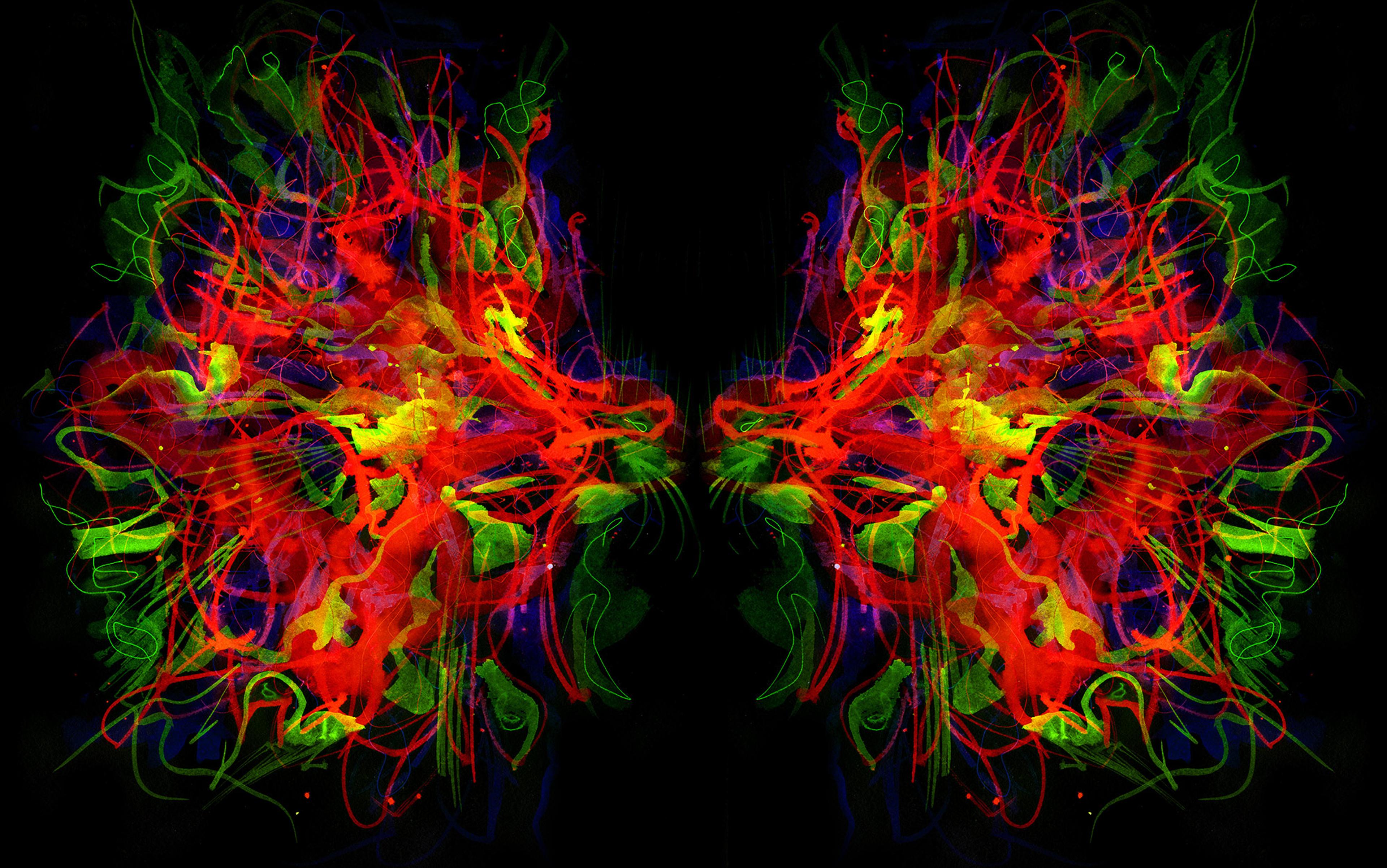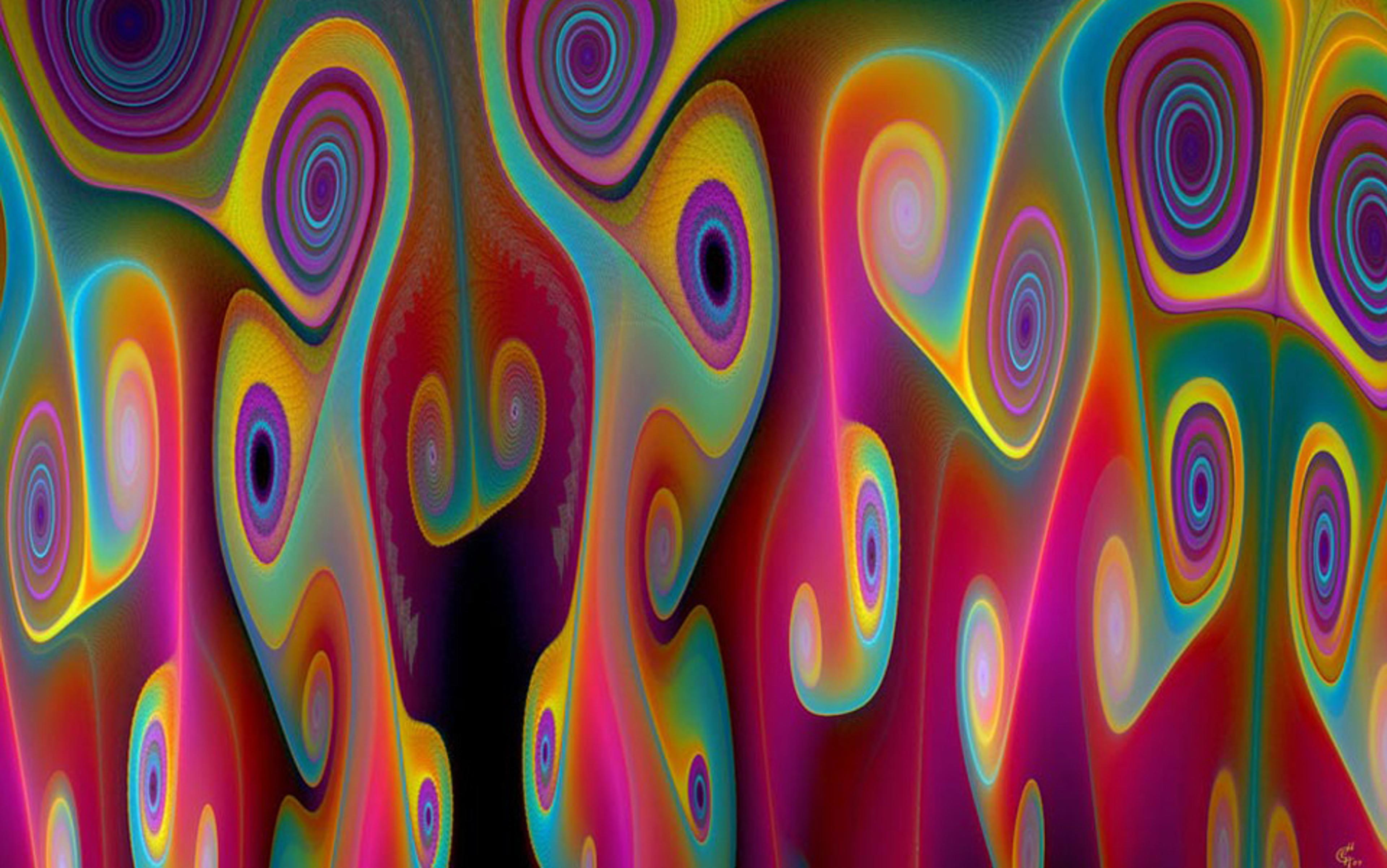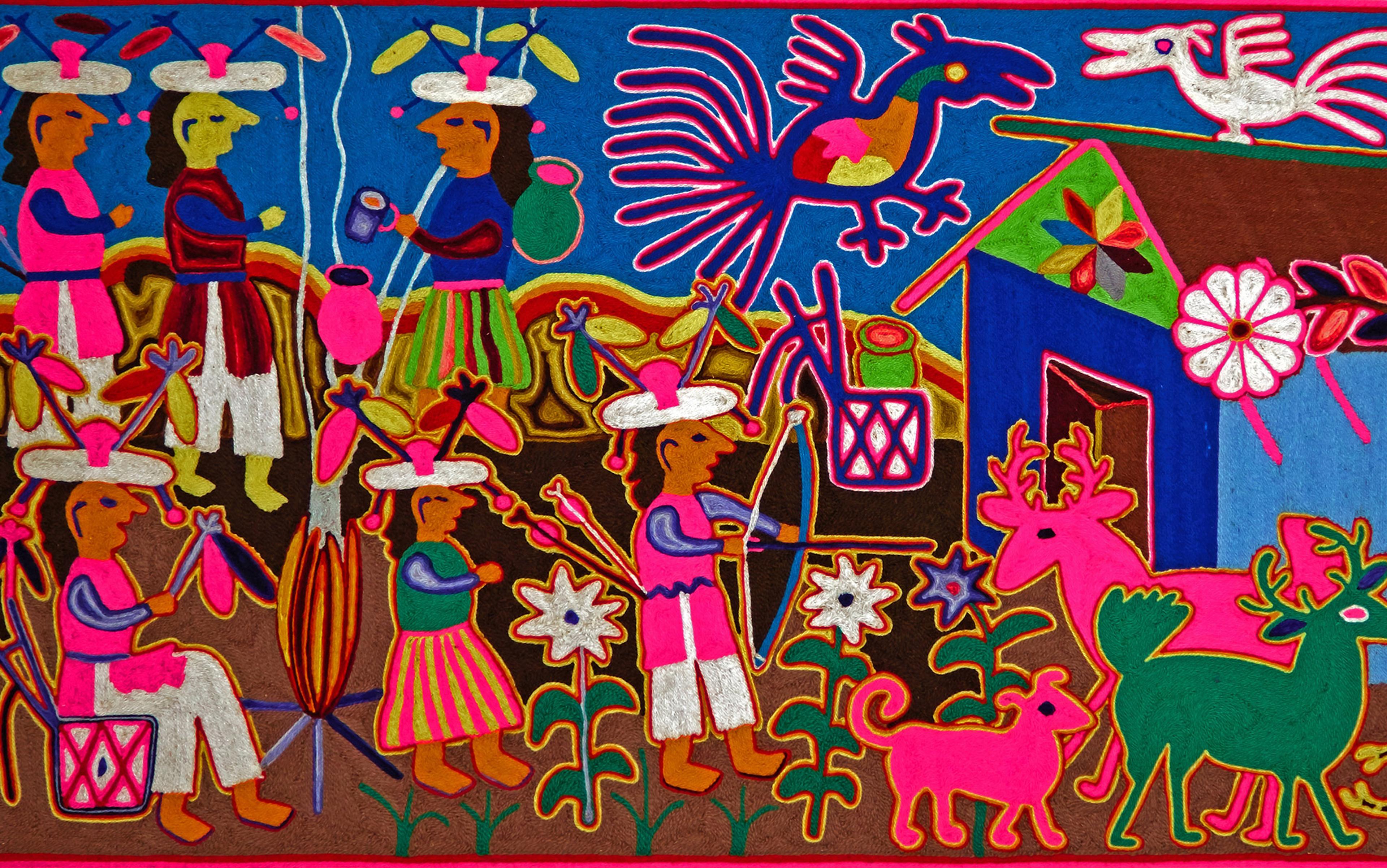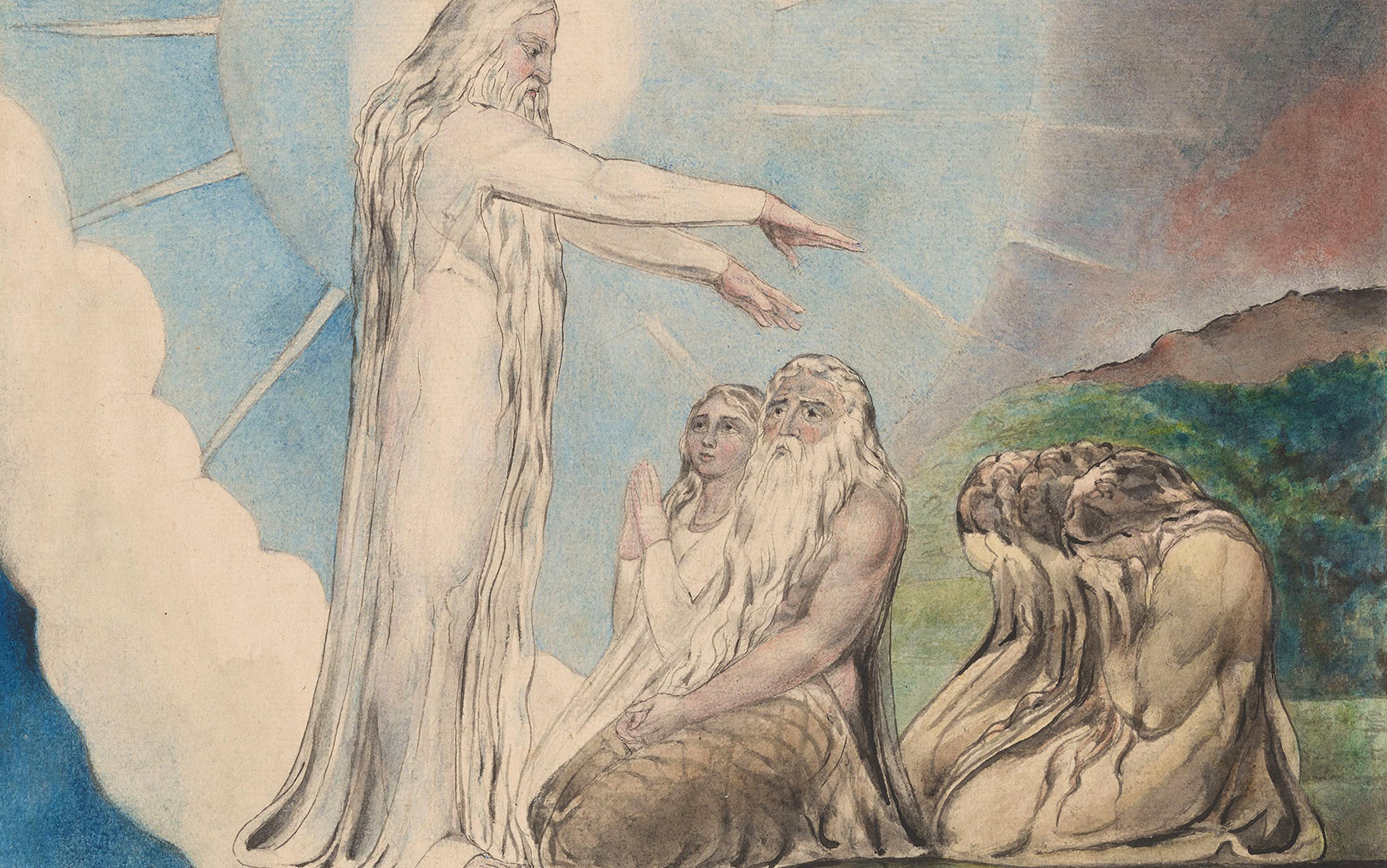Even Dr Gonzo, the hell-raising Samoan attorney in Hunter S Thompson’s novel Fear and Loathing in Las Vegas (1972), wouldn’t touch ‘extract of pineal’. That stuff was the limit: ‘One whiff of that shit would turn you into something out of a goddamn medical encyclopaedia! Man, your head would swell up like a watermelon, you’d probably gain about a hundred pounds in two hours … claws, bleeding warts, then you’d notice about six huge hairy tits swelling up on your back… Man, I’ll try just about anything; but I’d never in hell touch a pineal gland.’
While Dr Gonzo avoided the pineal, others have celebrated this small, pinecone-shaped endocrine gland near the centre of the brain. Notably, the psychiatrist Rick Strassman has championed the pineal gland as a possible source of the powerful psychoactive compound DMT (N,N-dimethyltryptamine). Struck by the ‘blinding light of pineal DMT’, Strassman has suggested in his 2001 best-seller, DMT: The Spirit Molecule, that the mammalian pineal gland could be a gateway between life and death.
That book described the first new research on psychedelics in the United States since the 1960s. In groundbreaking work conducted at the University of New Mexico in the first half of the 1990s, Strassman administered intravenous doses of DMT to nearly 60 volunteers, more than half of whom described encounters with ‘entities’, beings that were variously clownish, elven, angelic, demonic, alien, robotic, insectoidal, and more. These reports triggered Strassman’s provocative proposition that the pineal gland, under stress, could release enough DMT into the brain to cause extraordinary transpersonal experiences. After Strassman’s subjects reported encounters with aliens and other non-human forms, he conjectured that visionaries and prophets throughout history may have been in the throes of a pineal surge of naturally occurring DMT.
A potent, short-lasting compound that has been found throughout the plant kingdom, DMT can induce the sensation of leaving the body, producing profound changes in sensory perception, mood and thought, when it is administered externally – for instance, when it’s smoked or injected. Those under the influence sometimes compare the episode to the near-death experience, complete with perceived sentient beings who transmit information, often in the form of visual language. DMT is an important ingredient in the increasingly popular Amazonian brew ayahuasca. Its modern history starts with Hungarian psychiatrist Stephen Szára, who began studying its psychopharmacological actions in Budapest in 1956, documenting the short-lived but powerful hallucinogenic effects. Before long, other researchers had shown that DMT, much like the neurotransmitter serotonin, was a naturally occurring tryptamine – produced endogenously, by the body itself. But while researchers were successfully deciphering the purpose of serotonin in the function of the brain, the status of DMT remained notoriously complicated and unclear.
Generating controversy, some began to propose that this powerful psychedelic drug could be produced by the human body (and indeed the brain) in sufficient quantities to enable a natural psychedelic experience. The conjecture that we could produce enough of our own, endogenous DMT to induce altered states of consciousness without ingesting any chemical compound generated enthusiasm, and these unproven claims departed the clinic to lead independent lives in popular culture at large.
From the 1950s through to the ’90s, endogenous DMT was thought to cause psychopathologies. In the early years of this research, psychiatrists hailed this so-called ‘psychotomimetic’ compound – a compound that naturally mimics psychoses – as a possible chemical key in the cure for schizophrenia. Research on this front, however, demonstrated little variation between levels of DMT in normal volunteers and those with psychotic illnesses. While clinical research involving healthy volunteers could have provided vital knowledge, the War on Drugs in the United States made such research impossible.
The research vacuum was an absurdity to the ethnobotanist and stand-up philosopher Terence McKenna, not least since DMT was found naturally in the human brain. ‘This is the Catch-22 that they hold in reserve if they ever have to come after us – you are holding, and you can’t stop yourself,’ McKenna told an audience at the Camden Centre in London on 15 June 1992, during his presentation titled ‘Alchemical Youth at the Edge of the World’. McKenna was, hands down, the most outspoken advocate for tryptamines such as psilocybin-containing mushrooms, DMT, and its increasingly popular analog, 5-MeO-DMT.
Touring the globe during the 1980s and ’90s, McKenna shared his sometimes studied and other times half-baked opinions on world pharmacopeia. He championed the DMT experience as nothing short of a human ‘birthright’ – as much as ‘our sexuality, our language, our eyesight, our appreciation of music’. Extemporising on the meaning and purpose of endogenous DMT was among his popular subjects. The breakthrough experience associated with ‘heroic doses’, he claimed, could inaugurate visionary experiences intended not for the individual’s psychotherapy but, as he stated in a 1991 lecture at Stanford University, ‘the redemption of the human spirit’. This perspective gave inspiration to an underground community of enthusiasts who came to embrace plants, compounds and practices that purportedly ‘awaken the divine within’.
Strassman documented the alien ‘worlds’ into which his volunteers plunged and the ‘entities’ encountered
In 1986, Strassman had a pivotal encounter with McKenna at the Esalen Institute at Big Sur in California, followed by a working session at McKenna’s house in Sebastopol, CA, two years hence. ‘If it weren’t for my friendship with Terence, it’s unlikely I ever would have studied DMT,’ Strassman has recalled. ‘Nor would the form of my research be the same without [that] particularly memorable brainstorming session in his library in the summer of 1988.’
It was not long after this encounter that Strassman began his arduous and eventually successful gambit to gain approvals from the US Drug Enforcement Administration and the US Food and Drug Administration to trial DMT with healthy individuals. Observing the phenomenological effects reported by participants in the New Mexico trials, Strassman documented the alien ‘worlds’ into which his volunteers plunged. The drama and authenticity of these reports caused Strassman to challenge the view of DMT as the ‘nightmare hallucinogen’ promoted by legendary drug experimentalist William S Burroughs. Under Strassman’s watch, DMT was now the ‘spirit molecule’. Something was happening here, and for Strassman, the pineal gland was the smoking gun.
Identified in 300 BCE by the Greek physician Herophilos as the brain’s only unpaired organ, the pineal gland has long been a source of mystery and speculation. Galen, another Greek physician and philosopher, discussed its role as a valve regulating the flow of ‘psychic pneuma’. This view informed René Descartes, who in the 17th century situated the soul (for him, the mind) precisely in this tiny mid-brain structure, which he imagined to be something of a thought valve; he called it ‘the seat of the soul’.
It wasn’t until the latter half of the 20th century that scientists recognised the pineal as an endocrine organ – an important hub at night for converting the neurotransmitter serotonin, essential for higher cognitive processes, into the hormone melatonin, which plays a crucial role in activating sleep cycles. Finally, in the late 1980s, the neurochemist James Callaway proposed that pineal melatonin is converted into DMT (along with pinoline and 5-MeO-DMT) just before the onset of REM (rapid eye-movement) sleep, when we dream. Were such endogenous, psychoactive molecules literally fuelling our dreams?
Such questions tantalised Strassman, prompting him to pursue the phantom of the ‘psychedelic pineal gland’. He speculated that the pineal might excrete large quantities of DMT during extremely stressful life episodes, notably in the events of birth and death. He speculated that the gland’s central position in the brain, within the epithalamus, could allow for DMT secretion directly into the cerebrospinal fluid, impacting visual and auditory pathways. Absorbing the tenets of Tibetan Buddhism, he wondered whether, when we die (or indeed, have near-death experiences), the life force could be leaving the body through the pineal gland. Was DMT like the floodwaters carrying the soul into the liminal phase (or bardo) between life and life, as depicted in The Tibetan Book of the Dead? He proposed that, functioning like a spirit antenna, ‘pineal DMT release at forty-nine days after conception marks the entrance of the spirit into the fetus’. The impact of these speculations were felt in popular esoteric (spiritualist) circles and within Strassman’s Zen Buddhist community in Northern California, where he was ordained as a lay member until he was censured and subsequently exited in the late 1990s.
A reawakened pineal gland that opened the ‘third eye’ could enable astral travel and consciousness evolution
Speculation on the psychedelic efficacy of the pineal has reawakened interest in the organ. People have championed the capacity of the pineal to arouse previously dormant powers of perception, especially those associated with vision: clairvoyance, seeing auras, and being awakened to information from other dimensions. Appealing to spiritual practitioners, parapsychologists and filmmakers alike, the readouts from Strassman’s study impressed those eager for neurochemical explanations of extrasensory abilities and extraordinary states of consciousness.
The appeal is unsurprising, given how ideas presented in Strassman’s book were easily interpreted as assertions of truth. And these truths were broadly consistent with modern theosophy, especially the ideas of the Theosophical Society, a clearinghouse for new spirituality that, from the late-19th century, had its agendas shaped by Eastern spirituality. The condensed reports from Strassman’s volunteers could be seen as validating spiritual claims: ostensible transit into higher-dimensional ‘hyperspace’, after all, resembles theosophical methods for tripping on the ‘astral plane’, where travellers leave their bodies to access ‘higher consciousness’ and awaken their inner divinity. Contact with purported ‘entities’ transmitting visual information parallels the notion of channelling wisdom from the ‘hidden masters’ recorded by the founder of the Theosophical Society, Helena Blavatsky. Reports from some of Strassman’s subjects even held a strange resemblance to the ‘intelligent cosmic evolution’ found in Blavatsky’s magnum opus, The Secret Doctrine (1888).
These are no small asides, given Blavatsky’s belief that a decalcified pineal gland – the ‘eye of Shiva’ that had atrophied through the course of evolution – is integral to the evolution of consciousness. This appropriation of Hindu philosophy gave New Age followers cause to celebrate. Like an opened Third Eye, a reawakened pineal gland could enable out-of-body experiences, hypnagogic imagery, near-death experiences, astral travel and, ultimately, consciousness evolution, they held. Now armed with knowledge of the ‘spirit molecule’, they could fashion practices or update techniques presumed to enable DMT synthesis in, and release from, the pineal.
Mocking the spiritual evolutionary agendas of Blavatsky and other theosophists, the horror writer H P Lovecraft challenged the presumed virtues of the organ, which in his fiction was exploited as a literary device that could re-open ‘cracks in the world’. In the horror culture that Lovecraft inspired, the pineal gland was no longer the deva (or deity) eye whose reawakening will allow us to re-evolve. Instead, it became an ancient gateway whose modern day disturbance at the hands of foolish and corrupt scientists allowed them in. In this subversion, the pineal became an antenna that not only detects signals from the cosmic horror show beyond, but as evident in Lovecraft’s short story ‘From Beyond’ (1920) (inspiration for Stuart Gordon’s ludicrous 1986 film adaptation of the same name), invites malevolence into our world.
The narrator in ‘From Beyond’ recounts a gripping tale of the estranged scientist Crawford Tillinghast, who has discovered the true function of the dormant, malevolent gland, which he awakes with an electrical machine. Making the formerly invisible world available to the senses, the unspeakable horror of Tillinghast’s machine, according to Lovecraft, is that it exists in the here-and-now, all the time.
Long-clawed, ashen-faced entities are unleashed in pineal-DMT-harvesting experiments gone awry
Such narratives have assisted the release of the ‘spirit molecule’ into the pop-cultural bloodstream. In one tradition, theosophical pursuits are combined with post-Romantic ideas to suggest that ‘entheogens’ (hallucinogens from plants) perform like ancient astronauts, guides and teachers for alienated humans, now heroically dosed to avert their tragic fate. Among those who have transposed this mindset into fiction is the author Graham Hancock, for whom DMT, among other substances, is embraced as a world-saving device. In Hancock’s dark entheo-fantasy, Entangled: The Eater of Souls (2010), maverick physicist John Bannerman (a character loosely based on Strassman) goes in search of ‘the holy grail of quantum physics’, introducing volunteers to DMT in hopes of finding ‘an alternate system of human perception – a sort of sixth sense that might be harnessed to explore other dimensions of reality’.
Another narrative buoyed by the mythos of the spirit molecule is the found-footage-style horror film Banshee Chapter, directed by Blair Erickson and released in 2013. Inspired by Lovecraft’s ‘From Beyond’ (and its film adaptation), this instant cult classic weaves together the shadowy legacy of the CIA’s MKUltra ‘mind control’ research – in which DMT (alongside other psychoactives) was tested on human subjects – and the now-popular suspicion, via Strassman, of DMT’s production in the human pineal gland. Here, long-clawed, ashen-faced entities that appear to own their victims are unleashed in pineal-DMT-harvesting experiments gone awry. In homage to Fear and Loathing, the film’s rogue literary figure, Thomas Blackburn, strikes a Hunter S Thompson pose. But rather than causing tits to grow on your back, the mutant CIA DMT inaugurates a disaster of greater interdimensional proportions – not unlike Tillinghast’s resonating machine.
That same year, Strassman and his colleagues reported that DMT had been identified in the pineal glands of rats, a finding met with considerable interest in the growing psychedelic research community. But while these findings boosted Strassman’s theories, the debate over whether the human pineal gland could manufacture DMT in psychedelic quantities still rages on.
And as the search for solid proof continues, the runaway ‘DMT gland’ meme continues to fuel films, our literature and our cultural myths, impregnated with opposing perspectives on the human condition.
In staking their claims, cultural producers have exploited the uncertainties associated with DMT and its profoundly unpredictable out-of-body effects, which make the compound ripe for imaginative storytelling. The narratives that emerge are imbued with ambivalence. In David Gelb’s 2015 feature, The Lazarus Effect, pineal DMT is the base-compound for a serum that – you guessed it – brings back the dead. And, as you’ve no doubt further guessed, we might have been better off if the dead weren’t tampered with.
The polarity around the molecule is widespread: good or bad? Tragic or transcendent?
In the popular science-fiction TV series Sense8 (2015-), DMT plays a prominent role in the opening episode. Introduced as a potential source of ‘truth, connection, transcendence’, the molecule is used to connect the story’s ‘cluster’ of Homo sensorium – an evolving human form, with members distributed across the planet, but psychically and sensuously connected to each other. The DJ Riley Blue, an H sensorium, is introduced to a drug dealer, Nyx, who smokes DMT with her. During that experience, Blue is transported into the world and body of Will, a Chicago cop, and a member of her cluster; but when she emerges from her interdimensional trance, she discovers that Nyx has been knocked unconscious and is being robbed of his money and drugs by two of Riley’s acquaintances – who only moments before were smoking DMT as well. In a subsequent episode, Nyx locates and abducts Riley, torturing her for information about his missing money (which she’d given to a huckster). With DMT implicated in greed, violence and revenge, the creators of Sense8 express a seriously ambivalent attitude towards the ‘spirit molecule’. Good or bad? Tragic or transcendent? A source of hope or fear? Worldviews collide here and we cannot be sure who is right.
That isn’t stopping Strassman; he continues to stoke the popular imagination. With neuroscientist Andrew Gallimore at the Okinawa Institute of Science and Technology in Japan, he recently published a pharmacological model for administering DMT to volunteers through ‘target-controlled intravenous infusion’, a technology that can maintain a stable concentration of the drug in the brain. If what some call the ‘DMT machine’ gets off the ground, it could stretch a 20-minute experience to as much as five hours, enabling a generation of psychedelic Magellans prophesied by McKenna. While this extensive exploration of ‘alien worlds’ has psychotherapeutic applications, the DMT machine has all the hallmarks of a science fiction tour de force. And as for the pineal? New rumours come from Strassman himself: elevated levels of DMT found in a dying rat’s brain are set to trigger fresh secretions of debate over the spirit gland.






